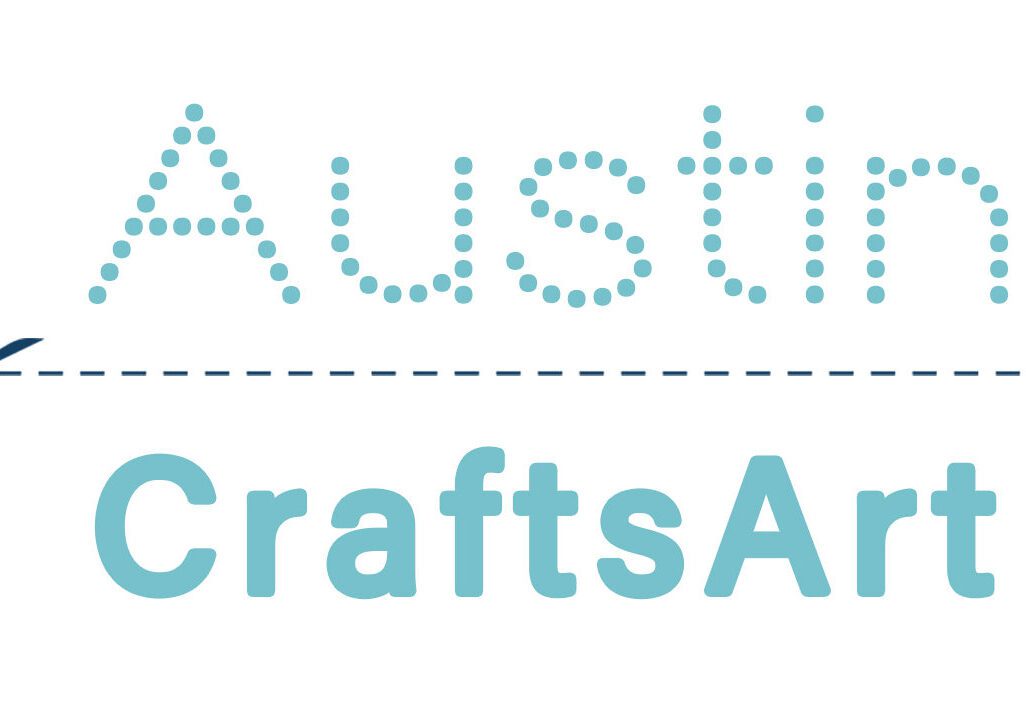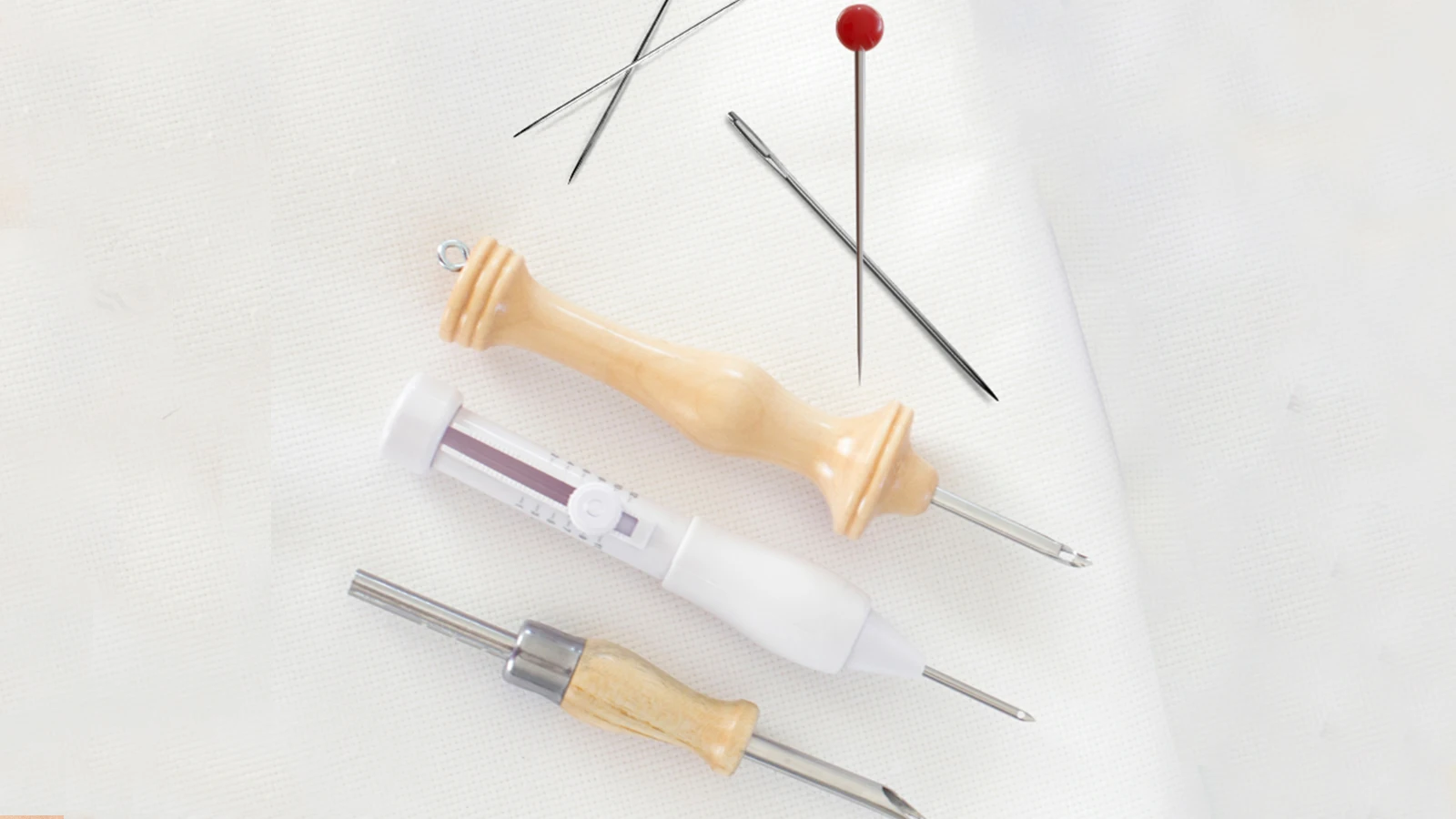Choosing the right needle size for embroidery is crucial for the quality and precision of your work. Generally, for hand embroidery, use a size 3 to 9 needle. Consider the fabric and thread types you’re working with. Lighter fabrics like silk need smaller needles (size 8 or 9), while heavy fabrics like denim require bigger ones (size 5 or 6). For standard embroidery threads, use a size 5 to 10 needle. Remember, the thickness of your thread and intricacy of design will also influence your selection. Exploring various needle sizes and types will enhance your projects. You’ll discover more as you continue.
Key Takeaways
- Match the needle size to the fabric and thread, generally opting for size 3-9 for standard hand embroidery.
- Choose smaller needles like size 8 or 9 for lightweight fabrics and size 5 or 6 for heavier fabrics like denim.
- For embroidery threads, use size 5-10 for standard and size 3-9 for thicker or specialty threads.
- The type of stitch affects needle size, with size 1-5 suitable for bullion stitches and size 5-10 for satin stitches.
- Needle size selection is crucial for stitching smoothness, appearance of the final fabric, and executing unique embroidery techniques.
Why should you choose the right size needles to use?
Choosing the right size needle for embroidery is important for getting the best results. The needle size you pick impacts the quality of your embroidery work. A needle too small or too big for your thread weight can cause breakage or a lackluster finish.
Use a needle that matches your thread size to improve stitching and avoid damaging your fabric. Your stitching precision is enhanced when you use the correct needle size, helping you create intricate designs with ease.
Don’t underestimate the importance of this detail. It’s not just about convenience; it’s about the integrity of your embroidery work.
Types of Hand Embroidery Needles

You’re now ready to explore different types of needles, each with its unique characteristics and uses. Crewel needles have sharp points and are used for embroidering. Tapestry needles have big eyes and blunt ends, ideal for cross-stitch. Chenille needles, Milliners or Straw needles, and Darning needles are selected based on the fabric, thread, and design complexity.
Crewel Needles
Crewel needles, or embroidery needles, come in sizes 1 to 12 to match various threads and fabrics for embroidery work. The size of your crewel needle plays a crucial role in determining the outcome of your work. A size 1 needle, the largest, is ideal for heavier threads while a size 12, the smallest, works best for finer threads.
The crewel needle stands out with its moderately long eye and slender shaft. It is designed to facilitate smooth stitching on surface and crewel embroidery. Understanding these characteristics will help you select the right needle for your specific project. It ensures precise stitching and intricate details.
Tapestry Needles (Cross Stitch Needles)
Tapestry needles, also called cross stitch needles, have a long eye and blunt tip. Tapestry needles are also used for cross stitch and needlepoint. This needle with a blunt tip easily goes through even weave fabric without damaging the fibers.
The long eye of the tapestry needle accommodates multiple strands of embroidery floss. It ensures accurate and seamless threading. The needles come in sizes 13 to 28. Smaller numbers mean larger needles for thick threads, and larger numbers mean smaller needles for thin threads. Using the correct size tapestry needle guarantees smooth stitching, adequate coverage, and a professional finish to your embroidery project.
Chenille Needles
Chenille needles are hand embroidery tools with a long eye and sharp tip. It is ideal for surface, crewel, and chenille embroidery.
Their design is tailored to accommodate thicker, specialty threads, thereby enhancing your stitching versatility. Experiment with chenille needles to discover how they can handle a variety of techniques and materials. As a bonus, they’re excellent for creating textured effects like loops and tufts.
The sharp tip enables precise and accurate stitching. So you can manipulate threads with ease. Remember, size matters too. Fine details might require a smaller chenille needle, while heavier threads could call for a larger one.
The right chenille needle can elevate your embroidery projects, ensuring smooth, precise outcomes every time.
Milliners Needles (Straw Needles)
Milliners’ needles, also known as straw needles, are used for various tasks. These needles are hand embroidery tools with a small, round eye and sharp tip, perfect for detailed stitching.
These needles are ideal for fine embroidery where the thread is wrapped around them. They’re a godsend for tasks like bullion stitches or securing threads with utmost precision.
A milliner’s needle has a sharp tip for precise stitches and better control, even with detailed work. Their unique features are essential for specific stitching needs.
Darning Needles
Often referred to as the ‘workhorses’ of embroidery, darning needles offer a robust solution for mending and repairing fabrics. They efficiently stitch through multiple threads or yarn, ideal for repairing worn fabrics. Their long shaft is designed to accommodate the bulk of multiple threads, making your task a breeze.
You’ll find darning needles in various sizes and materials. Some even feature a bent tip for easier maneuvering. They’re ideal for fixing holes, tears, or worn areas in items like socks and sweaters. As a hand embroiderer, knitter, or crafter, you’ll find these needles are an indispensable tool in your kit.
Beading Needles
Have you ever marveled at the intricate bead work in hand embroidery designs? A beading needle is your secret tool for creating these mesmerizing details. These thin and flexible needles come in sizes 10, 11, and 12 to fit different bead sizes and embroidery techniques.
What makes a beading needle unique is its small eye, designed to accommodate fine threads. Needle flexibility is key when threading beads, and the right needle size ensures precision and accuracy. Remember, matching the needle size with your embroidery project is crucial.
If you’re aiming to add delicate bead work to your embroidery projects, a beading needle might be your best ally. It’s all about finding the right balance and achieve smooth stitching and stunning results.
Quilting/Betweens Needles
Quilting or betweens needles are great for hand quilting and embroidery. Beading needles are perfect for detailed bead work. These shorter and finer needles are ideal when precision is key. Quilting/Betweens needles, available in sizes 3-12, smoothly pass through fabric to reduce damage and ensure smooth stitches.
Their small round eye, although petite, is capable of accommodating multiple strands of thread. This makes them exceptionally versatile and suitable for a variety of projects. Remember, the lower the number, the thicker the needle. So, select the needle size based on your fabric and thread weight. With these needles, you can elevate your hand quilting and fine embroidery to new levels of excellence.
Sharps Needles
For detailed embroidery, use Sharps needles. Because they have slim, sharp points and smooth shafts. Their sharp needle design facilitates precise stitching and efficient needle penetration, especially beneficial when working with fine details.
These sharp-pointed needles come in sizes ranging from 1-12, with smaller numbers indicating finer needles. A size 9 Sharps needle is often used with one strand of embroidery thread for detailed work.
Curved Embroidery Needles
Curved embroidery needles are great for stitching on curved surfaces because of their bent design. Their shape makes them ideal for techniques like bullion knots, creating smooth curves, and stitching in tight or awkward spaces.
You’ll find these needles in different sizes, catering to various thread weights and project requirements. They’re commonly used for quilting, doll making, and embellishing garments. These needles shine when adding dimensional elements to your work, bringing your intricate designs to life.
Make sure to match your needle size to your fabric and thread, for smooth stitching and to avoid damage. Try out curved embroidery needles for your next project – you might find them versatile and handy.
4 Tips to Help you Choose Needles for Embroidery

Choosing the right needle for your embroidery project depends on the technique, fabric, thread, and stitches you plan to use. Remember, the needle size affects your stitching smoothness and the final appearance of your fabric.
Don’t be afraid to experiment with different needle sizes and types to find the perfect match for your embroidery needs. There are four tips for beginners to choose your needles.
Depend on your Embroidery Project or Techniques you are Employing
Choosing the correct needle size for your embroidery project can greatly improve your stitching experience and final outcome.
For general hand embroidery, a size 3-9 needle is typically appropriate. It accommodates a variety of thread weights and fabrics. When your embroidery project involves heavier threads, choose a size 1-3 needle. This will ensure smooth stitching without causing damage.
For intricate work, opt for a size 10-12 needle, especially when working with fine threads. Remember to consider the number of floss strands and fabric thickness when deciding what size needle to use.
Don’t hesitate to experiment with different needle sizes to find the perfect fit for your unique embroidery techniques and projects.
Depend on the Fabrics you Stitch.
When selecting needles for embroidery, the type of fabric you’re stitching plays a significant role in your choice. Your sewing needle’s size and type should align with your fabric’s weight. For lightweight fabrics like silk or organza, size 8 or 9 embroidery needles are best. It minimizes visible holes and ensures clean, professional results.
Medium-weight fabrics like cotton or linen? Try size 7 or 8. Use size 5 or 6 embroidery needles for thick materials like denim or canvas. Remember, matching the needle size to the fabric weight is key to avoid puckering or distortion in your design.
Don’t hesitate to experiment with different needle sizes and types to find your perfect fit.
Depend on the Embroidery Threads you choose
Just as your fabric choice influences the needle size, so does the type of embroidery thread you’re working with. If you’re using standard embroidery threads, opt for a size 5-10 needle. For thicker or specialty threads, a size 3-9 needle should be your go-to choice.
Your needle size also depends on the weight of your embroidery floss. If you’re doing strand stitching with multiple strands, you’ll need a larger needle. However, for fine details and single strand stitching, a smaller needle is your best bet.
Depend on Embroidery Stitches you Use
Choosing the right needle size is important for high-quality and precise embroidery.
It’s essential to choose a needle of the correct size for the type of stitch you’re using. Use size 3–9 needles for general embroidery, size 1-5 for bullion stitches, size 5-10 for satin stitches, and size 7-12 for fine details.
Cross stitch needles come in various sizes. Use larger needles for thick threads and heavy fabrics, and smaller needles for fine threads and delicate work. Experimenting can help you find the perfect fit.
Conclusion
There are a variety of embroidery needles. You can choose suitable needles for your project. Choosing the right needle size isn’t just about getting your work done. It’s about creating art that’s beautiful and well-crafted.
Remember, the right needle size depends on your fabric and thread. Don’t be afraid to experiment with different needle sizes and types. This hands-on approach will help you discover the ideal needle for each unique project.
So dive in, explore, and let your creativity flow. Happy stitching!

